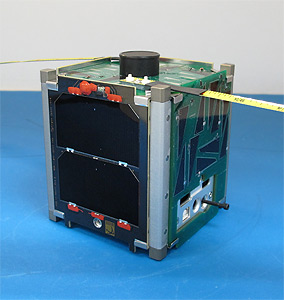BisonSat (Nwist QÌÊ·iqÌÊ·áy)

BisonSat [SKC]
BisonSat or Nwist Q̓ʷiq̓ʷáy is an educational 1 Unit CubeSat designed and built by students of the Salish Kootenai College (SKC), Montana.
The primary purpose of the SKC CubeSat mission is educational, but also has a science objective of using broad-band visible light orbital imagery to study atmospheric aerosols, cloud formation, and various hydrologic processes.
The BisonSat CubeSat is solar powered and carries a SKC-designed camera and a radio for receiving commands and transmitting data. BisonSat is passively attitude stabilized by a bar magnet inside, which will line up with Earth's magnetic field. This allows for earth imaging, where the magnetic field has a large downward vertical component. Oblique imaging is possible in equatorial areas. When the satellite is over Montana, the magnetic field will point the camera straight down, making it easier to gather data for Montana. Over much of North America the camera will be pointed to within 10º-30º of nadir. At perigee, the 35 mm optic yields a 8.4º field of view, and a 69 km maximum ground swath width. Best resolution is 43 m ground sampling distance at nadir.
The camera system design will build on the experience gained by SKC students and faculty with its NASA High Altitude Student Platform Wide Field Camera designed for HASP Flight 5. BisonSat will be operated from a satellite communications groundstation built at SKC.
In 2012, BisonSat was down-selected for a launch opportunity through the NASA ELaNa program. It was successfully launched on 08 October 2015 on the ELaNa-12 mission. Telemetry has been received on several occasions.